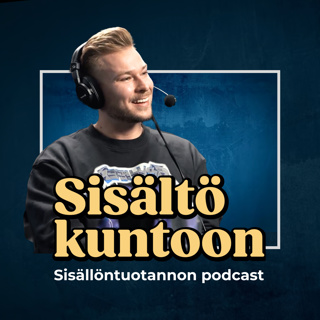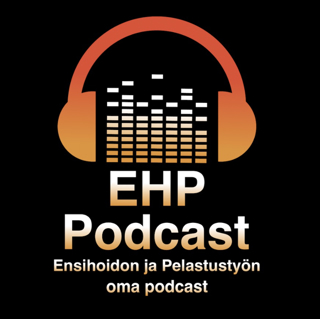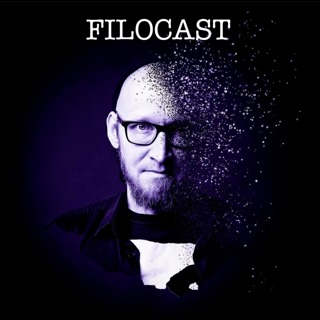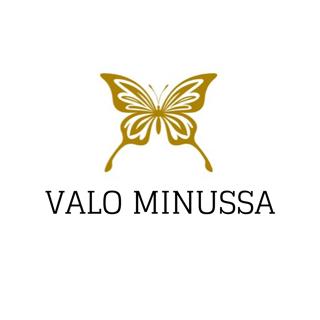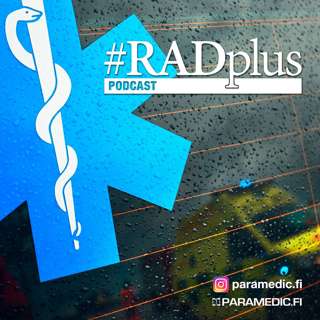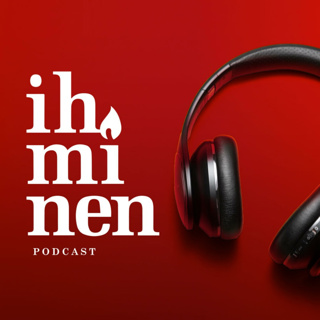
Ep. 576 Biliary Endoscopy Techniques: Managing Strictures & Drains with Dr. Ahsun Riaz
So you’ve placed the biliary drain—are your patients getting the follow up that they need? In this episode, Dr. Ahsun Riaz from Northwestern University joins host, Dr. Christopher Beck, for a deep dive into biliary strictures—how to manage them effectively and navigate the potential complications of this challenging chronic condition.---This podcast is supported by:Medtronic Emprinthttps://www.medtronic.com/emprint---SYNPOSISDr. Riaz takes us inside his journey of building a specialized hepatobiliary service at Northwestern, highlighting innovative practices like endoscopic techniques and radiofrequency ablation. He unpacks the nuances of distinguishing benign from malignant strictures, shares technical pearls for patient management, and emphasizes the power of collaboration with Gastroenterology to improve long-term patient outcomes. He outlines key technical considerations, including the use of the Hudson loop and strategic equipment selection to address intra-procedural challenges. He further emphasizes the importance of comprehensive patient care—ensuring appropriate follow-up, minimizing drain duration, and prioritizing quality of life as essential components of optimal management.---TIMESTAMPS00:00 - Introduction01:28 - Biliary Drain Management04:18 - Approach to Biliary Strictures19:20 - Endoscopic Evaluation and Techniques27:53 - Practical Tips and Experiences with Endoscopy30:39 - Post-Procedure Follow-Up and Patient Outcomes31:16 - Learning from the Hudson Roof Technique32:48 - Innovations in Benign Stricture Management36:48 - Endobiliary Ablation: Equipment and Procedure40:23 - The Double Dragon Technique Explained46:02 - Considerations for Malignant Biliary Stenting52:37 - Future Innovations and Collaborative Care
26 Syys 57min

Ep. 575 Physician Employment Models: Exploring Benefits & Challenges with Dr. Ryan Trojan
Could hospital employment be your path to practicing 100% interventional radiology (IR)? In this episode of BackTable, host Dr. Ally Baheti sits down with Dr. Ryan Trojan, an interventional radiologist at INTEGRIS Health in Oklahoma City, to discuss the pros and cons of hospital employment contracts in IR.---This podcast is supported by:Medtronic Emprinthttps://www.medtronic.com/emprint---SYNPOSISThe physicians take a deep dive into the evolving employment models in the IR landscape. Dr. Trojan shares his journey from a private IR-DR blended practice to becoming directly employed by a hospital, highlighting the financial challenges, contract negotiations, and administrative dynamics along the way. He explains the growing loss of IR talent to lucrative diagnostic contracts and emphasizes the importance of advocating for IR’s value to hospital systems, from decreasing length of stay to supporting ECMO, trauma, and transplant services. The discussion covers financial security, administrative support, and the benefits of having aligned goals with the hospital in order to grow an IR practice. Dr. Trojan also addresses common misconceptions about IR and private practice, detailing how the landscape is likely to change over the coming years, and offers advice on navigating employment contracts. ---TIMESTAMPS00:00 - Introduction03:02 - Transition to Hospital Employment12:15 - Advocating for IR’s Value16:07 - Contract Structures and Compensation Models25:07 - Benefits and Downsides of the Employed Model28:27 - Negotiating Contracts and Fair Market Value41:12 - Conclusion---RESOURCESDr. Trojan’s contact information:ryan.trojan@integrishealth.org
23 Syys 43min

Ep. 574 MRI Guided Interventions: Techniques, Benefits, & Clinical Applications with Dr. Clifford Weiss and Dr. David Woodrum
Should MRI-guided interventions be on your radar? Find out why the future of interventional radiology might lie in MRI guidance with experts Dr. Clifford Weiss from Johns Hopkins University and Dr. David Woodrum from the Mayo Clinic.---This podcast is supported by:Medtronic Emprinthttps://www.medtronic.com/emprint---SYNPOSISThe physicians join host Dr. Chris Beck to explore the benefits of MRI guided procedures, including superior imaging capabilities and reduced radiation exposure. Dr. Weiss and Dr. Woodrum detail the challenges and barriers to adoption, like the intricate set up needed to protect equipment from a strong magnetic field. They highlight the significant technological advancements and collaborations between MRI and device companies that are set to make MRI guided interventions more accessible and practical for everyday use. They also discuss the reimbursement paradigm for MRI guided biopsies and how similar the algorithm is to CT guided procedures.The episode closes with unique insights for young physicians on training opportunities and the promising future of MRI guided interventions for trainees looking to bring a different approach to their future practices.---TIMESTAMPS00:00 - Introduction05:13 - The Advantages of MRI in Interventional Radiology13:44 - Technical Insights and Challenges of MRI Guided Procedures18:46 - Future Prospects and Industry Developments in MRI Guided Interventions31:01- Development of Hybrid MRI Rooms48:19 - Economic Considerations and Reimbursement52:33 - Community Support for MRI Interventions56:41 - Conclusion and Final Thoughts---RESOURCESInternational Society for Magnetic Resonance in Imaging:https://www.ismrm.org/
19 Syys 59min

Ep. 573 BackTable Tricks Competition 2025
What tricks do you have up your sleeve to help you get through tough cases? In this special episode of the BackTable Podcast, Drs. Ally Baheti, Mike Barraza, and Chris Beck spotlight the most creative and practical pearls from the 2025 BackTable Tips & Tricks competition, showcasing standout submissions and clever techniques shared by their peers. --- SYNPOSIS Guests include leading interventional radiologists like Dr. Aaron Fischman from Mount Sinai, who reveals his unique wire-shaping method—bending it like a question mark to navigate challenging, angulated vessels during prostate artery embolization. From Jefferson, Dr. Sean Maratto walks us through his innovative retrograde approach to placing double J stents. And from Ochsner Health, Dr. Tyler Sandow brings invaluable guidance on achieving direct portal vein access for TIPS. --- TIMESTAMPS 00:00 - Introduction 03:30 - Favorite Tips and Tricks06:11 - Practical Techniques and Personal Experiences15:41 - A Humbling Experience with Phil Banov16:02 - The Bumper Stitch Technique17:55 - Direct Portal Access for TIPS19:35 - Navigating Challenging Cases24:11 - Radial vs. Femoral Access Debate27:33 - Innovative Techniques and Tricks29:36 - Final Thoughts and Gratitude
15 Syys 31min

Ep. 572 How to Perform Mesocaval Shunts: Techniques & Outcomes with Dr. Omar Chohan and Dr. Harris Chengazi
Before the advent of TIPS, mesocaval shunts were considered a less popular option for managing portal hypertension. But today, could they serve as a lifeline when no other choices remain? This week on BackTable, Drs. Omar Chohan and Harris Chengazi (Great Lakes Medical Imaging) join host Dr. Chris Beck to discuss the evolving role of endovascular mesocaval shunts, covering patient selection, clinical decision-making, and technical pearls. --- SYNPOSIS In this episode, the hosts delve into the specialized procedure of meso-caval shunts, focusing on its applications for patients with portal hypertension who have no other viable options. This discussion includes detailed case studies, such as one involving a woman with autoimmune hepatitis and another with pancreatic cancer, showcasing the practical challenges and innovative solutions in creating these shunts. In each case, they detail the rationale for patient selection, difficult anatomy, procedural steps, and resolution of symptoms like recurrent ascites and variceal bleeding. The episode emphasizes the importance of pre-procedure planning, collaboration, and precise imaging, utilizing advanced tools like the 4D CT scanner. The conversation also highlights the compassionate motivation behind these complex procedures, aimed at improving patients' quality of life. --- TIMESTAMPS 00:00 - Introduction 03:07 - Historical Context and Indications06:49 - Case 1: Patient with Refractory Ascites34:00 - Case 2: Recurrent GI Bleeding41:16 - Case 3: TIPS Consult - Pancreatic Cancer and Duodenal Varices47:44 - Lessons, Pearls, and Tips56:13 - Final Thoughts --- RESOURCES A Case Series of Dr. Chengazi's Mesocaval Shunts on X:https://x.com/chengazimd/status/1966337167879438571 Episode 573 Portal Hypertension Treatment Strategies:https://www.backtable.com/shows/vi/podcasts/473/portal-hypertension-treatment-strategies-ir-hepatology-perspectives TIPS University Freshman Year:https://www.backtable.com/shows/vi/podcasts/123/tips-university-freshman-year-referrals-pre-op-workup TIPS University Sophomore Year:https://www.backtable.com/shows/vi/podcasts/124/tips-university-sophomore-year-basic-procedure-technique TIPS University Junior Year:https://www.backtable.com/shows/vi/podcasts/125/tips-university-junior-year-advanced-techniques-ice-splenic-access TIPS University Senior Year:https://www.backtable.com/shows/vi/podcasts/126/tips-university-senior-year-gunsight-technique-splenic-closure
12 Syys 1h 12min

Ep. 571 Independent IR Practices: Key Strategies for Success with Dr. Kartik Kansagra and Dr. Harout Dermendjian
What does it really take to break away from the hospital system and build your own interventional radiology practice?---This podcast is supported by:Medtronic Emprinthttps://www.medtronic.com/emprint---SYNPOSISIn this episode, host Dr. Ally Baheti interviews Dr. Kartik Kansagra and Dr. Harout Dermendjian, independent interventional radiologists from California and founders of EVS LA. They share their journey in establishing and growing an independent IR practice, discussing their training at Kaiser Sunset, the steps they took to develop their own practice, and the challenges they faced along the way. Emphasizing the importance of training, clinician communication, and balancing inpatient and outpatient services, they offer valuable insights and advice for new IR professionals considering a similar path.---TIMESTAMPS00:00 – Introduction and opening remarks01:23 – Early training and transition08:54 – Clinical vs. non-clinical IR practice differences13:05 – Achieving parity with other interventional specialties17:47 – Building insurance contracts and following up with patients24:31 – Setting boundaries and documenting clinical decisions34:32 – Final advice and closing words from the guests
9 Syys 37min

Introducing Backtable Cardiology
8 Syys 1min

Ep. 570 Exploring Atherectomy’s Role Below the Knee with Dr. Anahita Dua
Below the knee atherectomy is a hot topic right now in the vascular community. Why is it so controversial? Dr. Anahita Dua, vascular surgeon at Mass General, joins host Dr. Sabeen Dhand to explore the utility of this technique and the pressing need for more Level I evidence in this space. --- This podcast is supported by:AngioDynamicshttps://www.auryon-system.com/ --- SYNPOSIS The conversation dives into the controversial role of below-the-knee atherectomy in limb salvage, an area where data has long been debated. Dr. Dua, principal investigator of the AMBITION BTK Trial—the first randomized controlled trial comparing below-the-knee atherectomy to angioplasty alone—introduces the trial and explains how it fits into the current body of literature. Together, the doctors review past evidence, current practice, and the future outlook for tibial interventions. Dr. Dua outlines the wide range of techniques and clinical strategies used to manage PAD, and stresses the importance of physician engagement with the NIH and research community to establish stronger, evidence-based protocols. She also shares her candid thoughts on the most overrated and underrated devices in tibial intervention, highlighting atherectomy’s potential role in vessel preparation before below-the-knee treatment. --- TIMESTAMPS 00:00 - Introduction04:55 - Current State of Evidence and Challenges10:54 - Heterogeneity in PAD Treatment14:26 - Need for National Metrics and Standardization20:51 - AMBITION BTK Trial and Importance27:23 - Potential Outcomes and Implications30:18 - Trial Design34:56 - Advice for Practitioners37:36 - Underrated and Overrated Devices41:50 - Conclusion --- RESOURCES AMBITION BTK Trial:https://www.angiodynamics.com/studies/ambition-btk/
5 Syys 45min









